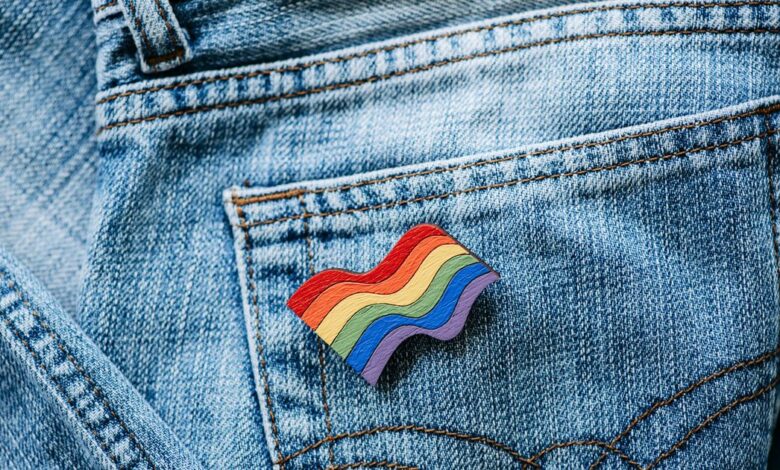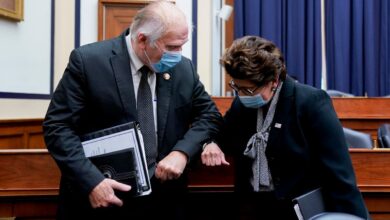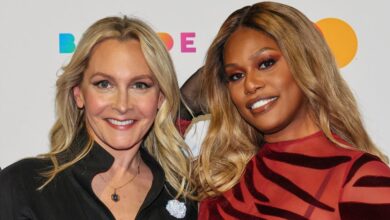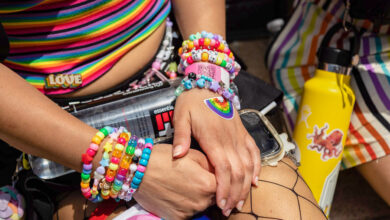I Have A Trans Kid. I Thought I Knew What It Would Be Like To Parent Him — But I Was Wrong.

Last year, I wrote the story of my son, Rachel, coming out as trans. At the time he came out, I knew nothing about the transgender community, but I expected Rachel’s journey to include pronouncements to the general public that he was trans; pink, blue and white stickers and pins in his room and on his backpack; and a general acknowledgment from his classmates and teachers that he was trans because, obviously, he would tell them.
Rachel has short brown hair, big brown eyes and a sprinkle of freckles, and he wears athletic shorts, T-shirts and blue and white high-tops. At 9 years old, he has yet to hit puberty, so his only tell is his name, which we have found we can deal with by not saying anything or explain away with “We’re Jewish. It was his grandmother’s name.”
However, this still doesn’t satisfy some people because what they see doesn’t match what they hear, and we get a lot of “Ray?”
Then there is usually a frown before we can move on in the conversation. It is uncomfortable and comical at the same time to see people trying to figure out what is happening — it’s almost a “does not compute” moment. “See boy, hear girl name.”
I’ve vetted every activity or camp for Rachel since 2021 — part of the mama bear instinct that emerged when I learned the hard way that not every person or situation was kind to trans kids. Every organization claims to be LGBTQIA+ friendly; sometimes that’s just window dressing. Three years in, my mama bear instincts were tired, and I signed him up for a day camp without talking to the administration. As I sent him off the first day, I hoped that everything would go well. I hoped no one would ask about his name. “Please, be kind,” I thought as I watched him walk toward the smiling teenager in a bright yellow shirt who checked him into camp.
Rachel came home that day with some unexpected news: He had a trans counselor in art who talked about how he was getting top surgery Friday. The counselor had said how excited he was.
Rachel said that he had looked around the room and “decided that it was a safe place.”
“So, I raised my hand and said, ‘I’m trans, too!’”
As so often happens with parents, we react differently on the outside than we feel on the inside. I smiled and said, “That’s so great,” not wanting to make a big deal out of it because I could tell that he didn’t want to make a big deal out of it. But it was a huge deal: Rachel had never outed himself in a social situation.
Those who knew definitively that he was trans were people who knew him before he came out or whom I had told in an effort to keep him safe during my close examination of everything he did. Rachel had gone to great lengths to make sure that the kids at his school saw him as a boy, and knew him as a boy and only a boy. Because he was so passable, it wasn’t a huge ask.
So, while I continued to put together his after-camp snack, inside I was doing a happy dance.
When the camp week ended, our family went out to dinner. We walked around the neighborhood afterward, and there was a queer bookstore. By the register, the store sold pins — pride pins, rainbows, pins with sayings such as “Love Is Love,” and pins with the trans flag on them. I love a pin — especially a rainbow or pride pin — and I asked Rachel if I could get one.
“How about this one?” I said, picking up a rainbow.
Rachel shook his head. “This one,” he said. He picked a trans flag-colored pin in the shape of a heart, “and this one.” It was a pin that said “Love Is a Many-Gendered Thing.”
The small person in my head did the happy dance again. On the outside, I just smiled and said, “Sounds good.”
We found a place to put it on my cross bag, and Rachel adjusted the bag so that the trans pin was front and center.
“That looks nice,” he said.
The next week, he attended a ballet intensive at his studio, which concluded with a day of parent observation. He suddenly had some instructions on what I should wear to parent observation day.
“Please wear your jeans shorts, your white T-shirt, and make your hair wavy.”
“Is that all?” I found this new interest in what I looked like amusing, as if he were trying to get me to match a mom he had seen on TV and thought pretty.
“Well, can you wear your trans cross bag? And have the pin in front. But don’t make it a thing.”
I wore the cross bag with the pin in front. And I didn’t make it a thing. But this small action was enough to make me take a step back and examine what my journey as the parent of a trans child had looked like — what it was, what it wasn’t, how it was different than what I’d expected. As I reflected on these past three years, I came away with a million little moments that led to only one certainty: There is no wrong way to be trans.
You can be a trans kid who from day one wears pins and ribbons on your backpack proclaiming your part in the queer community, or you can be the trans kid who just dresses in the clothes that match your gender and has no interest in being a standard-bearer for the trans community at your school. Or you can be both — maybe one in a certain area of your life and the other in a different area. Both are fine. There is no wrong way to be trans.
There are trans kids out there who love labels and surrounding themselves with kids who are also part of the LGBTQIA+ community, and that’s great. Rachel, at this point, isn’t the type of kid who wants or needs to be labeled as part of the queer community, and he doesn’t have a lot of LGBTQIA+ friends. One day that might change, but both ways are fine. There is no wrong way to be trans.
And, as I look back over our family’s journey with Rachel, I realize that it’s not our responsibility to make people comfortable with what they hear versus what they see. They hear a girl’s name, they see a boy, and it’s not our job or Rachel’s job to explain that away. Rachel is Rachel. He currently has no interest in changing his name; that’s not true for all trans kids. And that’s fine. There is no wrong way to be trans.
Finally, three years in, I have learned that there is a wrong way to be a parent of a trans kid, and that is to parent with anything but total support. This is going to come easier for some than others. For example, I didn’t have a problem accepting that Rachel was trans. I was caught off guard. I was scared because I didn’t know anything about what it meant to be trans or nonbinary. I didn’t have the answers to a lot of questions that were immediately thrown my way by other adults. (“Isn’t he too young to know?” “Don’t you think it’s just a phase?” “What happens when Rachel hits puberty?”) But I believed that Rachel knew how he felt and went with it.
It was harder for my husband to accept; however, he never showed his skepticism in front of Rachel. He always expressed total support for Rachel, but there was a strain on our marriage until he finally understood that it wasn’t a phase, I wasn’t making Rachel trans, and just because Rachel didn’t talk to him about his challenges with kids at school, that didn’t mean they weren’t happening.
It took almost a whole school year for my husband to finally realize that Rachel being trans wasn’t going away. He needed to do a lot of work to wrap his mind around what this “new Rachel” was, but he did it. He read books. He listened to podcasts. He educated himself. Our marriage healed.
Our journey as parents of a trans kid has come in three phases. Phase 1 was the initial panic, scrambling to figure out what was going on, trying to ignore the anxiety and the small person in my head screaming: “ALERT! SOMETHING IS HAPPENING THAT I DON’T UNDERSTAND!” It was telling school administrators, teachers, family and friends about Rachel’s new pronouns and giving lectures about things we had learned about being trans. It was almost a year of the ground shifting under our feet while we dealt with school bullying and learned how to get ahead of the next obstacle, the next cruel comment, the next ignorant kid.
Phase 2 came when my husband and I were finally on the same page regarding Rachel’s gender identity. This was the time we realized that being trans isn’t the most interesting thing about Rachel — that it is just part of who Rachel is, not all of it. It was a time of establishing normal routines with a heightened sense of a need to protect our son. It was the mama bear period.
Now, we are entering Phase 3: the exploration. Rachel has settled into himself, we have moved on as a family, and little things that are actually big things happen all the time, such as the parent-teacher conference where Rachel being trans was not even mentioned. Phase 3 is where, for the first time, Rachel has found a safe place to out himself. I like Phase 3.
Support Free Journalism
Support HuffPost
Already contributed? Log in to hide these messages.
I don’t know what the future holds, but to the parents who are just hearing “Mom, Dad, I’m trans,” know that this is only the first phase of your journey, and that it will pass. Read a book about parenting trans kids, listen to the podcasts, learn. Know that the small person panicking in your head will quiet down and, one day, will probably perform a happy dance when your trans kid does something special and brave, and it makes you so proud that you could burst.
Note: Some identifying details have been changed to protect the privacy of the individuals discussed in this essay.
Kate Smith is the pseudonym of a writer who lives on the East Coast.
Do you have a compelling personal story you’d like to see published on HuffPost? Find out what we’re looking for here and send us a pitch at pitch@huffpost.com.
Support Free Journalism
Support HuffPost
Already contributed? Log in to hide these messages.





